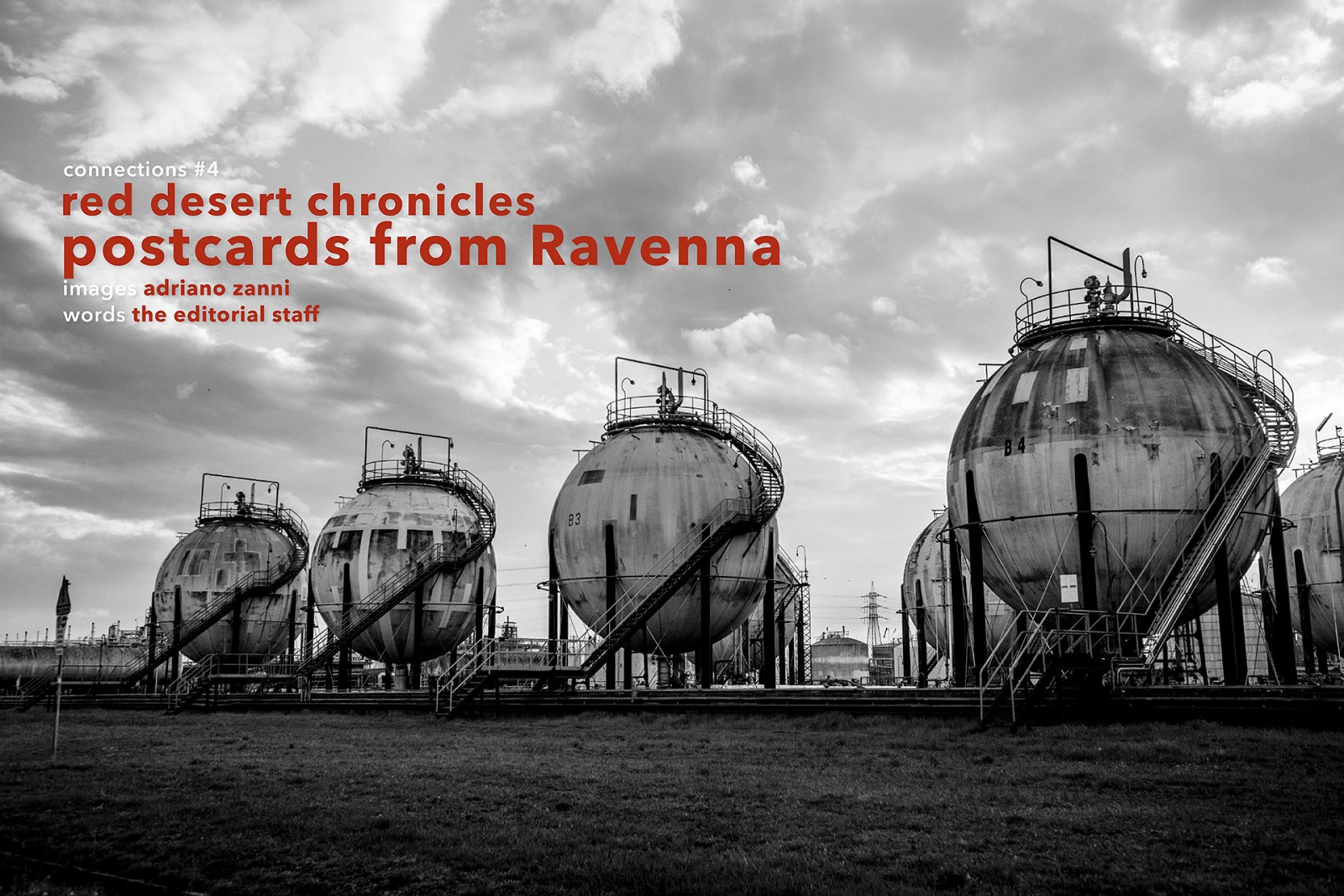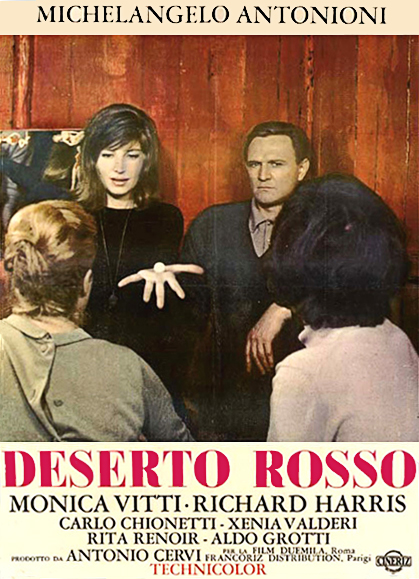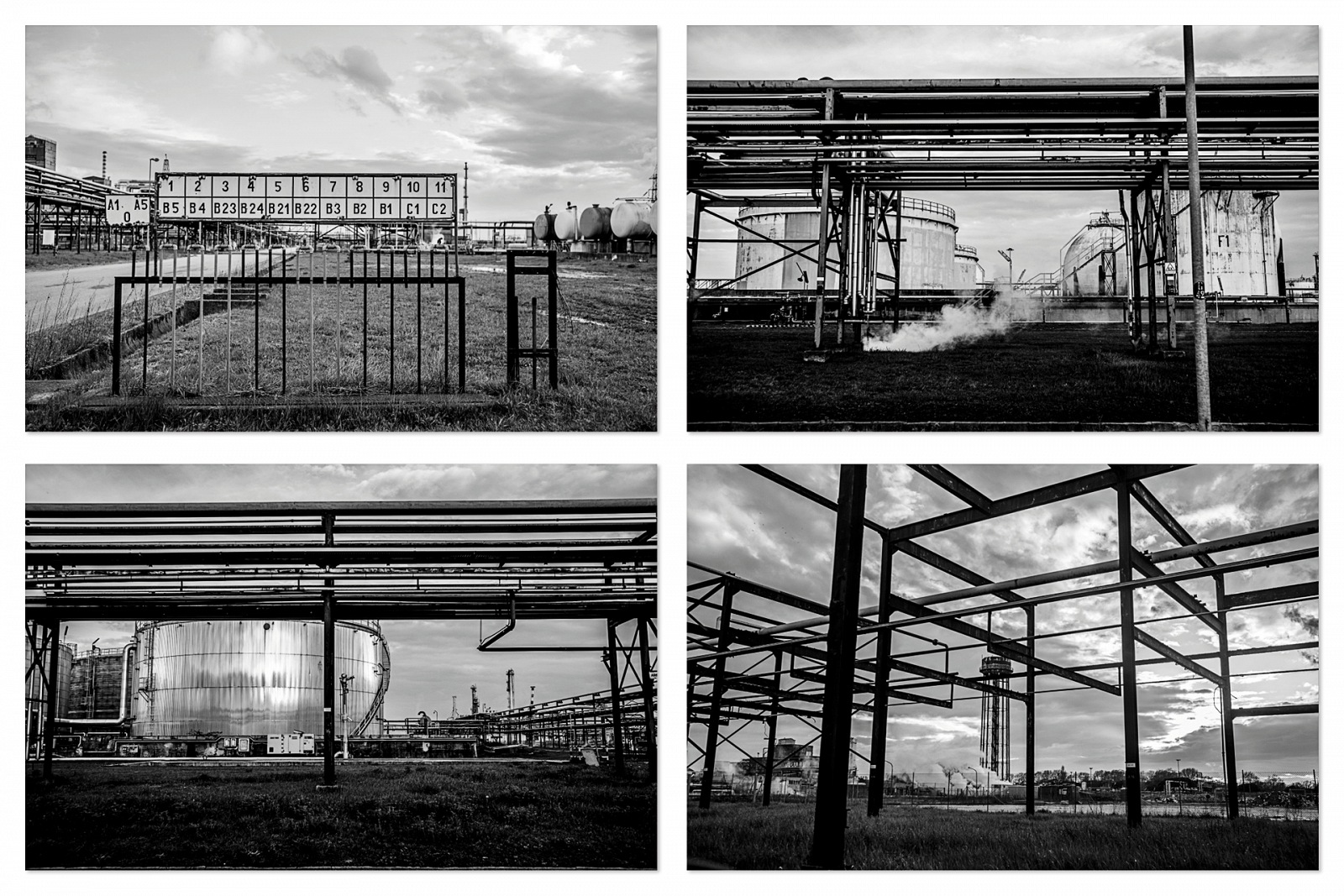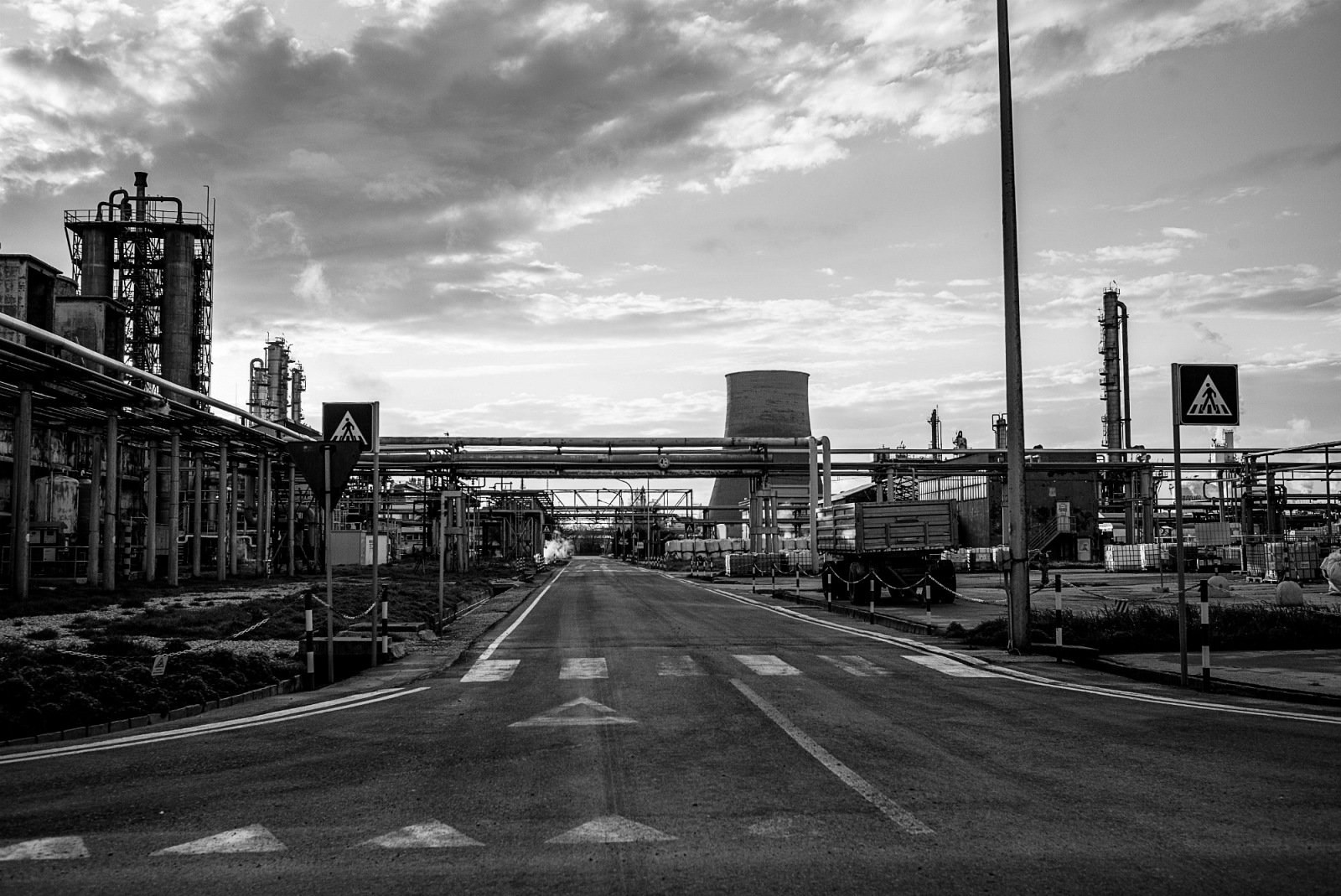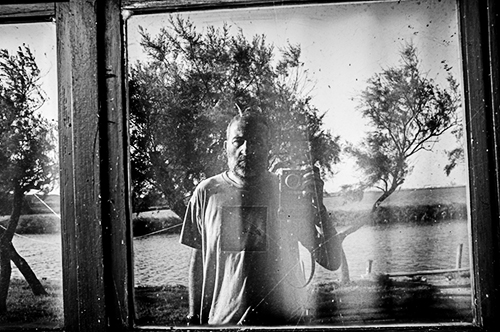Time. Space. Possibility.
Elements connected and interconnected. Abstract in form, to the point that it cannot be perceived if not in an indirect form. And yet they gather consonants and coincide in the visual expression returned by the images. The subject is materially industrial structures of the A.N.I.C. (Azienda Nazionale Idro Carburi), a Government chemical plant desired by Enrico Mattei at the turn of the fifties and sixties. In the petrochemical plant at Ravenna and its surroundings, in the early sixties, Michelangelo Antonioni decides to set his ninth film:
Il deserto rosso (The Red Desert). The place is a symbol of modernity and progress at that time. The pollution problem is still far from common awareness (1). The soundtrack of the film – in which the sounds of the factories have an alienating effect on the audience – marks the film in a powerful way.
And right from that sound starts the fieldwork that then evolves into an image. What today, half a century later, is that place of production that at the time of Antonioni symbolised in some way the contemporary evolution? Human presence is always more reduced compared to the past, but the smoke remains, the geometry of the structures, and the sounds of the machines. In a synthetic work, the sounds and the images we have carefully, culturally separated making (except the cinema) art strictly separate, are reunited. |
|
They do not do it, however, using a single support, but propose them again as separate elements that contribute to the story of a place. Simultaneously, however, they return the dimension of time elapsed, one that it has yet to reach, but also the one photo and that without which the sound would not be possible. And still the space that prevails, exalting the awesome power of the metal, the residue of an epic of conquest of man over the control of the laws of nature. And finally the possibility, indeed, the infinite possibility that is revealed in front of the passing of time and careful consideration of how much surrounds us.
[
The Editorial staff ]
--------------------------------------------
(*) - Free translation from Jean-Luc Godard, An interview with Michelangelo Antonioni (November 1964), ildesertorosso.it.
(1) - Valerio: «Why is that smoke yellow» Giuliana: «Because there’s poison.»
Valerio: «So if a bird passes there in the middle, it dies?» Giuliana: «By now the birds know and don’t pass there any more. Come on.» (Michelangelo Antonioni,
The Red Desert, 1964; mins. 1:52:00 - 1:52:28)
|

 home
cover ▼
opinions
news ▼
portfolio
post.it
post.cast
video
ongoing
thematicpaths
googlecards
FPtag
home
cover ▼
opinions
news ▼
portfolio
post.it
post.cast
video
ongoing
thematicpaths
googlecards
FPtag

